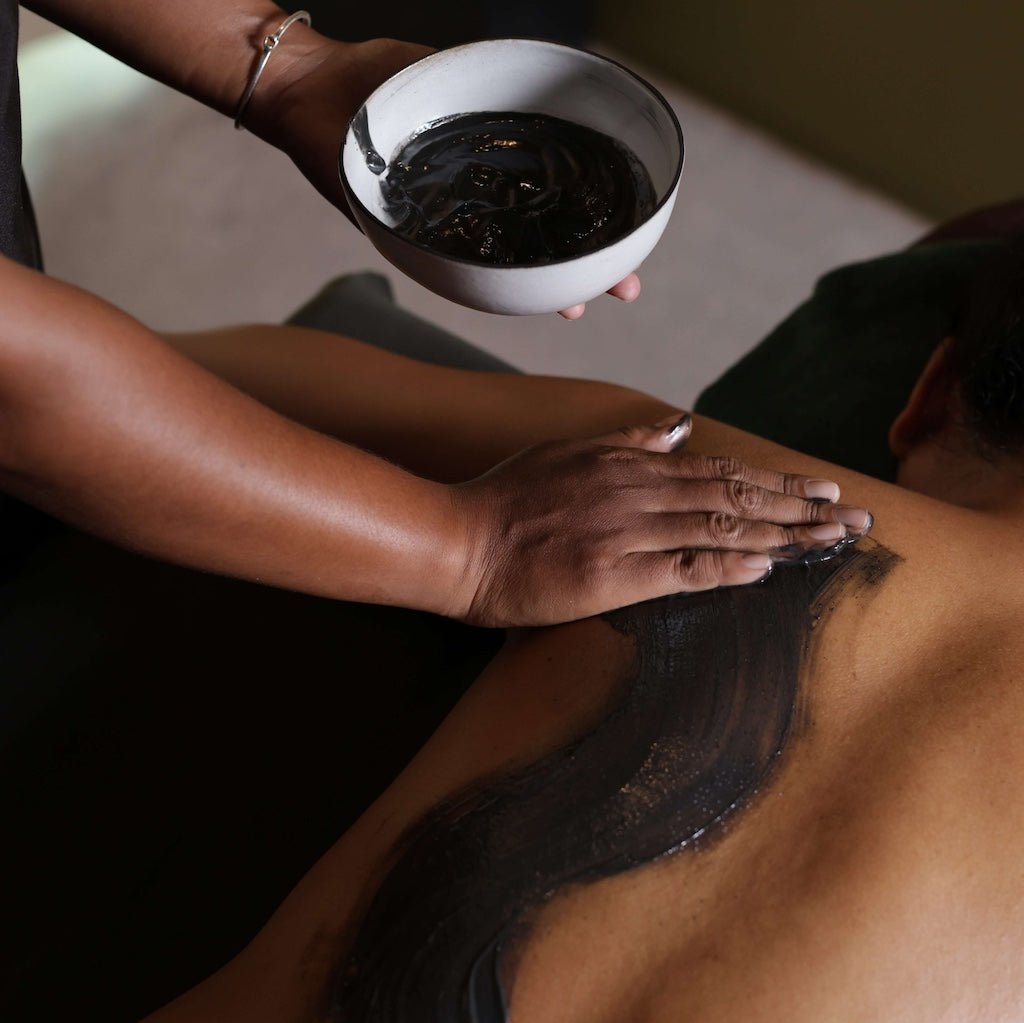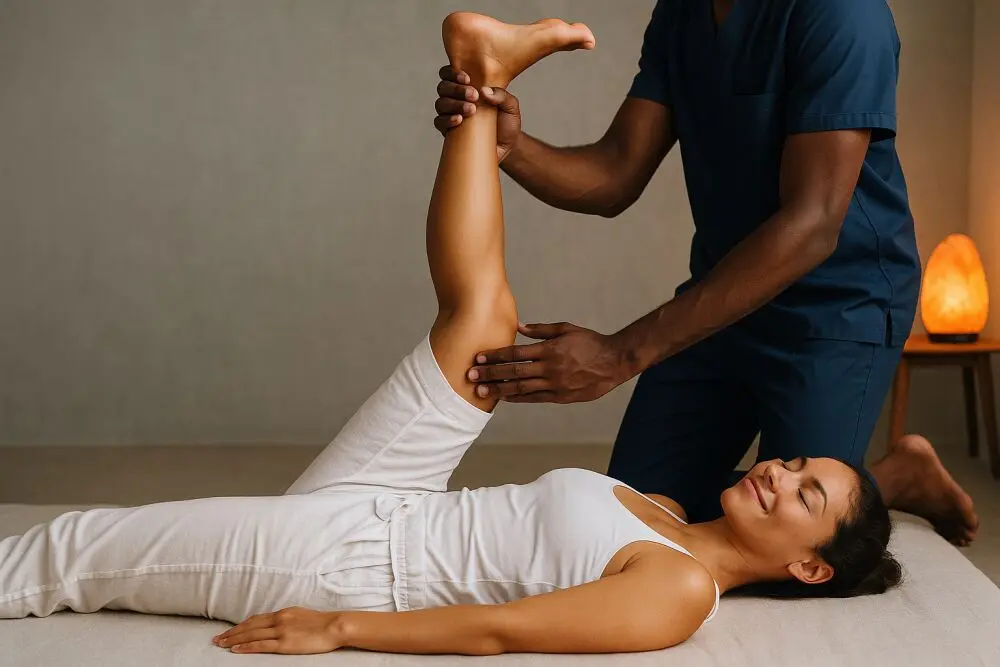If you’re dealing with tight hips, a stiff lower back, or can’t seem to move like you used to, you’re definitely not alone. According to the National Institutes of Health, nearly 80% of adults will experience back pain at some point in their lives. And here’s something interesting: research from the Journal of Sports Science & Medicine shows that regular stretching can improve flexibility by up to 20% in just four weeks. That’s where charcoal Thai massage for flexibility becomes a real option worth trying.
This treatment combines ancient healing methods with modern detoxification techniques; instead of just working your muscles like a regular massage, charcoal Thai massage for flexibility utilizes assisted stretching, rhythmic pressure, and activated charcoal to target the tension that has been holding you back. Whether you’re sore from your workouts, dealing with ongoing stiffness, or want to feel more comfortable moving through your day, this approach addresses the root cause of your flexibility issues. Want to know how it works?

Key Takeaways
- Thai massage enhances flexibility through passive stretching techniques that promote natural joint mobility and release muscle tension.
- Unlike Western massages, Thai massage is performed fully clothed on a mat using rhythmic compressions rather than oils or kneading.
- The practice provides significant pain relief for chronic back, shoulder, and hip conditions through targeted pressure point techniques.
- Regular sessions, held every 2-4 weeks, deliver both immediate and cumulative benefits for improved circulation and muscle recovery.
- Thai massage is particularly beneficial for athletes, office workers, individuals with chronic pain, and seniors seeking to improve their mobility.
The Ancient Roots of Charcoal Thai Massage Therapy
Thai massage traces its origins back over 2,500 years to ancient healing traditions in India and Thailand. The practice evolved through Buddhist monasteries, where monks developed and preserved these techniques as a form of compassionate care for their communities.
What sets this therapy apart is its focus on energy balance alongside physical movement. When you receive a charcoal Thai massage for flexibility at Tea Garden Spa, you’re experiencing authentic techniques that have survived for centuries because they treat your body as a complete system rather than isolated problem areas.
How Thai Massage Differs From Traditional Western Techniques
When you book a Swedish or deep tissue massage, you typically lie on a table while a therapist uses oil to knead your muscles. That’s not what happens here.
During a charcoal Thai massage for flexibility session, you stay fully clothed in comfortable attire and lie on a padded mat on the floor. Your therapist uses their hands, thumbs, elbows, knees, and even feet to apply pressure along your body’s energy lines. But here’s the most significant difference: instead of just pressing into your muscles, they actively move you through yoga-like stretches while you relax.
Think of it this way. Western massage works on you. Thai massage works with you. Your therapist will gently pull, rock, and stretch your limbs to increase your range of motion. This assisted stretching reaches areas you can’t target on your own, which is why people often feel looser and more flexible immediately after a session. You’re not passive during the treatment. Your body becomes part of the therapeutic process.
| Thai Massage Techniques | Western Massage Comparisons |
|---|---|
| Clothed therapy on floor mat | Undressed under draping on table |
| No oils used | Oil-based applications |
| Rhythmic compressions with palms | Kneading and stroking muscles |
| Practitioner uses whole body support | Primarily hands and arms work |
Key Benefits for Joint Mobility and Muscle Flexibility
Our skilled practitioners combine assisted stretching with acupressure techniques to create lasting improvements in your physical well-being.
- Enhanced joint mobility through passive stretching that safely extends your natural range of motion.
- Improved muscle flexibility as tight tissues release tension they’ve held for weeks or months.
- Significant pain relief from chronic conditions affecting your back, shoulders, and hips.
- Accelerated recovery after workouts or injuries, promoting better circulation and oxygen delivery.
You’ll notice both immediate benefits and cumulative improvements with regular sessions. The stress reduction effect compounds physical benefits, creating a holistic healing experience that leaves you feeling renewed and connected to your body’s natural capabilities.
The Science Behind Passive Stretching and Tension Release
 Your muscles tighten up when you’re stressed, sitting too long, or working out hard, and they often stay that way. During a traditional Thai massage, your therapist stretches your body while you remain completely relaxed. This is different from stretching yourself because your muscles don’t fight back or tense up to protect themselves. When someone else controls the movement, your muscle fibers can actually lengthen and release in ways they can’t when you’re doing the work.
Your muscles tighten up when you’re stressed, sitting too long, or working out hard, and they often stay that way. During a traditional Thai massage, your therapist stretches your body while you remain completely relaxed. This is different from stretching yourself because your muscles don’t fight back or tense up to protect themselves. When someone else controls the movement, your muscle fibers can actually lengthen and release in ways they can’t when you’re doing the work.
As your therapist applies pressure and moves you through these stretches, blood flow increases to your tight spots. This brings oxygen and nutrients while clearing out the waste products that build up in tense muscles. Your nervous system also calms down and sends signals to those clenched muscles that it’s okay to let go. That’s why massage therapy for muscle tension creates fundamental, lasting changes instead of just temporary relief. You’re teaching your body to release the tension it doesn’t need.
| Tension Response | Charcoal Thai Massage for Flexibility |
|---|---|
| Muscle guarding | Directed passive stretching |
| Stress-induced tightness | Rhythmic compression |
| Restricted blood flow | Enhanced circulation techniques |
| Limited joint mobility | Assisted range-of-motion exercises |
| Fascial adhesions | Targeted acupressure points |
You’ll experience holistic benefits apart from mere muscle recovery. Your body responds to this ancient practice by activating parasympathetic responses, promoting stress reduction, and creating lasting flexibility improvements that carry into your daily activities.
Charcoal Thai Massage’s Energy Line Work: Understanding Sen Lines

Energy pathways known as Sen lines form the foundation of authentic Thai massage at Tea Garden Spa. When you experience this ancient practice, you’ll feel the practitioner working along these invisible channels that run throughout your body, releasing blocked energy and restoring balance to your system.
- Sen Lines serve as conduits for the essential life force, similar to meridians in Chinese medicine.
- Energy Flow is enhanced through precise Thai Techniques that combine rhythmic pressure and gentle stretching.
- Pressure Points along these pathways help release tension and stimulate your body’s natural healing response.
- Holistic Healing occurs as energy blockages dissolve, improving circulation and flexibility.
You’ll leave feeling both energized and deeply relaxed, with a renewed sense of harmony that extends far more than just physical relief.
What to Expect During Your First Charcoal Thai Massage for Flexibility Session
When you arrive for your first charcoal Thai massage flexibility session, you’ll change into loose, comfortable clothing provided by the spa. Unlike other massages where you undress, you stay fully clothed for this treatment. Your therapist will have you lie on a padded mat on the floor and will begin by applying activated charcoal to specific areas of your body. This helps draw out toxins while preparing your muscles for the stretching ahead. The session typically lasts 60 to 90 minutes, and your therapist will check in with you periodically to assess your pressure and comfort levels.
The treatment itself moves through your entire body in a rhythmic, flowing motion. Your therapist will use their hands, forearms, elbows, and sometimes feet to apply pressure along your muscles and energy lines. Then they’ll gently guide you through stretches, pulling your arms, rotating your shoulders, or lifting your legs into positions that open up tight areas.
Some stretches may feel intense, but they shouldn’t cause pain. If anything feels too strong, just let your therapist know, and they’ll adjust. Most people think noticeably looser and more relaxed by the end of the session, and some mild soreness the next day is normal as your body adjusts to the increased movement.
Clothing, Comfort, and Preparation Tips for Maximum Benefit
To maximize the benefits of your Thai massage at Tea Garden Spa, wearing appropriate clothing proves essential for comfort and unrestricted movement. Unlike other massage styles, you’ll remain fully clothed during Thai massage, so your clothing choices directly impact your experience.
- Wear loose, stretchy attire – Think yoga pants, sweatpants, or comfortable shorts paired with a t-shirt that won’t restrict your range of motion
- Arrive 10-15 minutes early to complete paperwork and adjust to the serene environment
- Communicate your comfort levels with your practitioner about pressure intensity and stretching limitations
- Follow post-massage care by staying hydrated and taking a warm bath to extend the benefits
Your preparation techniques enhance both session etiquette and results, creating a more fulfilling wellness experience.
Combining Charcoal Thai Massage for Flexibility With Other Wellness Practices
Charcoal Thai massage for flexibility works well on its own, but many people find it even more effective when paired with other wellness habits. If you already practice yoga or pilates, you’ll notice that regular Thai massage sessions help you move deeper into poses and hold positions with less strain.
The assisted stretching opens up your body in ways that complement your own practice. Some people alternate between Thai massage and Swedish massage, using the gentler Swedish techniques for pure relaxation and Thai massage when they need serious work on flexibility and range of motion.
You can also support your results between sessions with simple practices at home. Staying hydrated helps flush out the toxins released during your treatment, especially with the activated charcoal component. Light stretching, foam rolling, or even short walks keep your muscles from tightening back up.
If you’re dealing with chronic tension or flexibility issues, your therapist might suggest scheduling sessions every two to three weeks at first, then spacing them out as your body responds. The key is consistency. Thai massage creates changes in your body that build over time when you make it part of your routine.
Who Can Benefit Most From Thai Massage Treatments

Nearly everyone can experience the rejuvenating benefits of Thai massage, but certain individuals will find it especially life-changing. At Tea Garden Spa, we’ve seen remarkable improvements in clients seeking therapeutic uses outside standard relaxation.
- Active individuals – Athletes and fitness enthusiasts gain flexibility enhancement that improves performance and prevents injuries.
- Office workers – Those with desk jobs find relief from chronic tension and improved posture.
- Individuals with chronic pain – Thai massage excels in pain management for conditions like lower back pain and fibromyalgia.
- Seniors seeking mobility – Older adults experience increased range of motion and renewed energy.
You’ll ascertain why Thai massage’s ideal clients often become our most loyal patrons, returning regularly to maintain their newfound flexibility and comfort in daily activities.
Conclusion: Creating Your Thai Massage for Flexibility Treatment Schedule at Tea Garden Spa
How often should you schedule Thai massage treatments to achieve maximum benefits? For optimal flexibility and relief, we recommend sessions every 2-4 weeks; however, your personalized approach may vary based on your body’s specific needs and response.
At Tea Garden Spa, you’ll work with our experienced practitioners to determine the perfect treatment frequency for your goals. Most of our clients find that 60-90 minute sessions provide the ideal balance for practical muscle work and stretching. When you call (410) 392-9007, you’ll be matched with a practitioner specializing in Thai techniques who can steer your wellness path.

